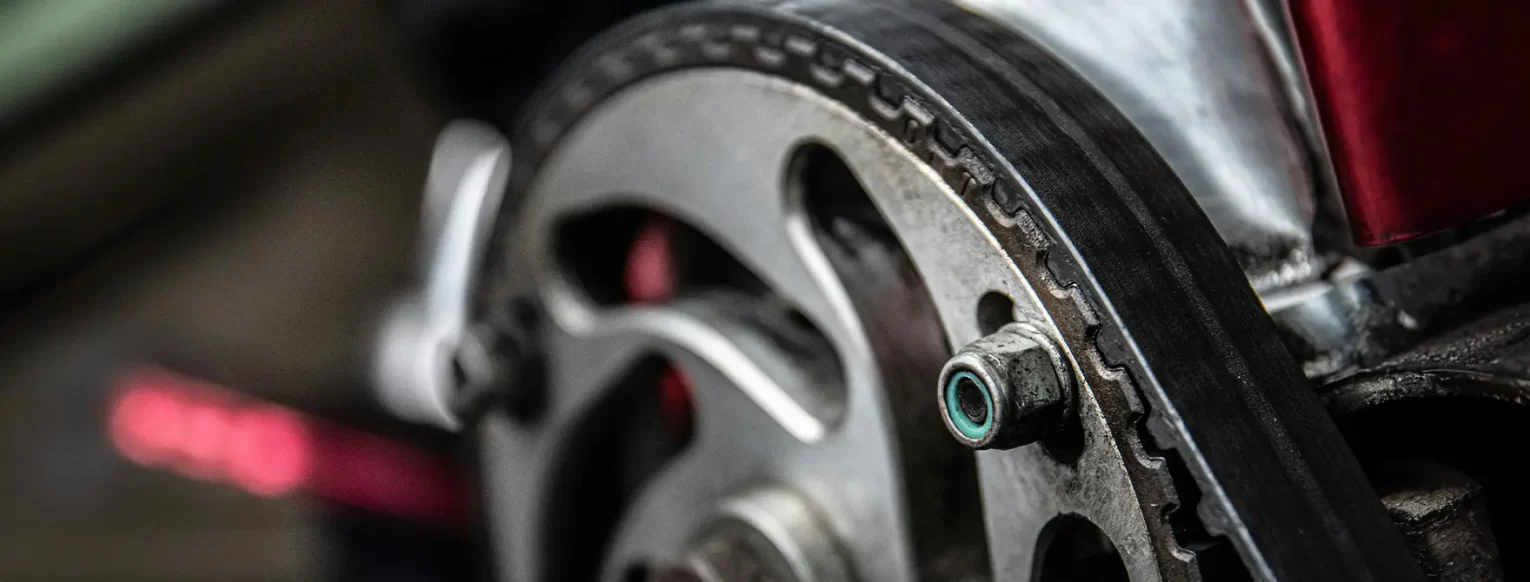The timing belt is a crucial component in your engine. Damage to your timing belt can lead to catastrophic engine failure and further damage to other engine parts. So, what is the timing belt, what does it do, and why is it so important to replace it?
What is a timing belt?
Prior to the 1960s and 70s, vehicles were equipped with a metal timing chain. In an effort to cut down on noise and vehicle weight, and increase fuel efficiency, the rubber timing belt was introduced. For several decades, the timing belt became standard. In more recent years, however, some car manufacturers have switched back to metal timing chains since metal is more durable than rubber. If you’re not sure whether your vehicle has a timing belt or a timing chain, you can consult your owner’s manual.
The timing belt helps to synchronize the valves and pistons in your vehicle’s engine. Specifically, it synchronizes the camshaft and the crankshaft. These two systems work together to keep fuel moving through your engine and exhaust moving out of it. Without the timing belt synching these systems, your engine won’t be able to run.
When should you replace the timing belt?
Just like other parts that need replacing, how long your timing belt lasts depends on your vehicle. Most manufacturers recommend replacing the timing belt somewhere between 60,000 and 100,000 miles. For specifics on your car, check your owner’s manual.
If you own a used car and you’re not sure if the timing belt has been replaced, it’s better to air on the side of caution. Replacing a timing belt can be a pain, but repairing an engine after it breaks is much worse (and much more expensive!).
What happens if a timing belt fails?
While the rubber used to make timing belts is sturdy and reinforced with nylon, it can still wear out over time. Your timing belt is often under a great deal of stress between high levels of motion and high levels of heat. If your timing belt fails, a few things can happen. Your engine may lose significant amounts of power, or it may stop running completely. The pistons and valves being regulated by the timing belt may smash into one another, causing further damage to your engine. Because timing belts play such an important role in engine function, the damage caused by a broken timing belt can add up quickly.
What are the warning signs for a bad timing belt?
Unfortunately, most vehicles don’t show many warning signs until it’s too late and the belt has broken. Prevention is the best strategy in protecting your vehicle’s engine from a broken timing belt. Most timing belts are located deep inside the engine, so it’s best to have your vehicle checked by a professional mechanic.
Call Restored Auto, LLC for help with your timing belt.
If you’d like your timing belt checked or replaced, call us for help! We can take a look under the hood and help you determine whether or not your car needs a new timing belt. Protect your vehicle from any unnecessary damage. Call Restored Auto, LLC to schedule an appointment today!

